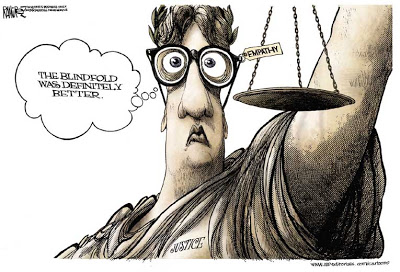
A kangaroo court is a court that ignores recognized standards of law or justice, and often carries little or no official standing in the territory within which it resides. The term may also apply to a court held by a legitimate judicial authority who intentionally disregards the court’s legal or ethical obligations. (Wikipedia)
The latest example is provided last month by Chief Justice Preston of the New South Wales Land and Environment Court dismissing on appeal the proposal to construct a new open-cut coal mine in the state’s Hunter Valley. His ruling rested on dubious suppositions.
The Chief Justice found that “all anthropogenic GHG emissions contribute to climate change”.
The Chief Judge invented a “wrong time test”. To pass that test, a fossil fuel proponent must now establish why their project should be allowed to proceed at this time in history, when it is clearly recognized that there is an urgent need for rapid and deep decreases in greenhouse gas emissions. To achieve this, most fossil fuel reserves need to remain in the ground unburned. The test asserts that a practical consequence of reaching the emission reductions required by the Paris Accord to achieve the 1.5 to 2°C goal is that coal production needs to reduce rather than expand.
So we have come to this. A sitting judge declares a prevalent social opinion regarding the future is the law of the land. A legal business venture is blocked on ideological grounds, because some believe now is the “wrong time” in history for such an undertaking. Kangaroos are hopping around like crazy.
It is fortunate indeed that this judge is not hearing the Juliana vs. US case. But then that is actually a legal proceeding where kangaroos or unicorns do not have standing. The precedents and body of law stacked against these climate cases is summarized in the most recent brief by the appellants (US Govt.) arguing against the claims of activists/alarmists (plaintiffs).
APPELLANTS’ OPPOSITION TO MOTION FOR PRELIMINARY INJUNCTION PENDING APPEAL February 19,2019 Some points of climate caselaw excerpted in italics.
“the unprecedented nature of this ambitious attempt to throttle important government functions superintending broad swaths of the national economy”
“The injuries identified by Plaintiffs arise from a diffuse, global phenomenon that affects every other person in their communities, in the United States, and throughout the world.”
“Plaintiffs “simply ignore that Defendant agencies and officers do not produce greenhouse gases, but act to regulate those third parties that do: innumerable businesses and private industries.”
“Plaintiffs have not even begun to articulate a remedy within a federal court’s authority to award that could meaningfully address global climate change as the claimed cause of their injuries.”
“Plaintiffs ask the district court to review and assess the entirety of the representative branches’ decisions relating to climate change and then to pass on the comprehensive constitutionality of those policies, programs, and inaction in the aggregate and then enter and enforce a sweeping decree against the government writ large.”
“Thus, the Due Process Clause imposes no duty on the government to protect persons from harm inflicted by third parties that would violate due process if inflicted by the government.”
“Every instance” in which this Court has “permitted a state-created danger theory to proceed has involved an act by a government official that created an obvious, immediate, and particularized danger to a specific person known to that official.”
“Plaintiffs seek to remedy carbon emissions, myopically attributing them to the U.S. government and ignoring that the global mix of carbon levels is (even on their own theory) predominantly the product of the actions of foreign actors the world over.”
“All of Plaintiffs’ claimed harms result from what they allege is the government’s general failure to protect the environment. Yet Plaintiffs have no constitutional right to particular climate conditions, and they may not resort to the state-created danger exception to circumvent that limitation.”
“This allegation of slowly-recognized, long-incubating, and generalized harm by itself distinguishes their claim from all other state-created danger cases on which they and the district court relied.”
“First, there is no fundamental right to a “climate system capable of sustaining human life.”
“The Supreme Court definitively rejected an attempt to use the federal common law of nuisance to centralize the management of carbon dioxide emissions in a single district court, operating outside the purview of the comprehensive Clean Air Act.”
“It is not clear how much of this sea level rise can be avoided by slowing down climate warming or even cooling the planet again.”
“Plaintiffs’ reliance on their self-described “deep anger, frustration, depression, and feeling of betrayal,” Motion 23-25, is likewise insufficient to establish irreparable harm. First, if this Court were to recognize feelings as irreparable injury, then every plaintiff who passionately disagrees with government action — i.e., most if not all plaintiffs — would satisfy the injury requirement.”
“Because Plaintiffs cannot demonstrate that their requested relief pending appeal would concretely impact climate change, the balance of equities tips heavily in favor of denying Plaintiffs’ motion.”

